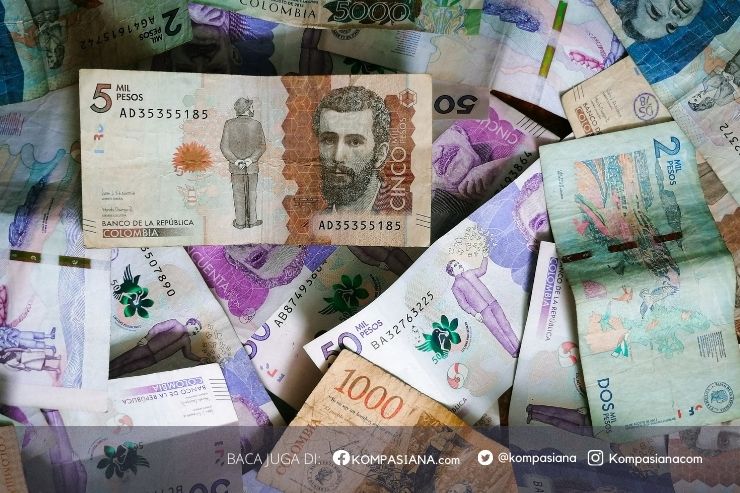Prof. Rokhmin Dahuri, MS
Head of the Maritime and Fisheries Affairs in the Indonesia Democratic Party of Struggle (PDI-P), Advisor to Minister of Marine Affairs and Fisheries (2019 -- 2024), and a former Minister of Marine Affairs and Fisheries (2001 -- 2004)
*Artikel Ini telah terbit pada Koran JakartaPost Edisi 17 Juli 2021.
All Indonesian citizens have long been aspiring for the materialization of the nation's indpendence goal that is a developed, prosperous, and soverign country. Despite improvement in almost all aspects of human life since its independence in 1945, the development status of Indonesia in 2019 was still as an upper-middle income country with GNI (Gross National Income) per capita US$ 4,050.
A country classified as an upper-middle income, when its GNI per capita is in the range of US$ 4,046 and US$ 12,535 (World Bank, 2020). While prosperous (high-income) countries are those with GNI per capita higher than US$ 12,695 (World Bank, 2021). Unfortunately, due to the COVID-19 pandemic, the country's development status falls back into a lower-middle income country with GNI per capita US$ 3,870. Indonesia is also still confronted with myriad development problems such as high poverty rate, income inequality, stunting growth, and a skewed regional development.
To escape from the middle-income trap, and become a developed and prosperous country with GNP per capita higher than US$ 12,695 by 2035 and US$ 27,500 by 2045, Indonesia's average economic growth must be bigger than 7 percent per year (Mc Kinsey Global Institute, 2020). In addition, the economic growth must be able to create more employment opportunities, and can be enjoyed by all Indonesian people on a fair and sustainable basis. It is also imperative to spread out new sources of economic growth and development activities to outside Java Island and rural areas, particularly in eastern part of the country.
Blue economy potential
Basically, blue economy means the use of coastal and marine ecosystems including their embodied natural resources and environmental services for sustainable economic development (UNEP, 2013). Natural resources within coastal and ocean space consist of renewable resources (e.g. mangroves, seagrasses, coral reefs, fish stocks, and ocean energy), and non-renewable resources such as oil, gas, minerals, and mining materials. Environmental services include the use of coasts, seas, and oceans for martitime transportation, recreation and tourism, assimilation of wastes, carbon sink, climate regulator, hydrological cycle, and other life-supporting functions.
As the largest archipelagic country on earth, three quarter of its area covered by marine waters with 17,504 islands and 99,200 km coastline, Indonesia has a huge blue economy potential. Such a gigantic economic potential can be utilized for the nation's economic development and prosperity through eleven sectors: (1) capture fisheries, (2) aquaculture, (3) fish processing industry, (4) marine biotechnology industry, (5) energy and mineral resources, (6) coastal and marine tourism, (7) maritime transportation, (8) coastal forestry, (9) small islands, (10) maritime industry and services, and (11) non-conventional resources such as ocean energy, deep sea mining, deep sea fisheries, and offshore aquaculture. It is estimated that the total potential value of RI's blue economy is US$ 1.4 trillion per annum (CCMRS, IPB University, 2018), almost 1.5 the country's GDP. Those eleven blue economic sectors may create employment opportunities for some 45 million workers. Moreover, about 45 percent of the world's commodities and products traded with total value of US$ 15 trillion per year have been transported through Indonesian seas (UNCTAD, 2014).
Last year, blue economy sectors including capture fisheries, aquaculture, energy and mineral resources, marine tourism, sea transportation, and maritime industries and services contributed about 20 percent to the country's GDP and employed more than 20 million people. Since 2009 Indonesia has been the second biggest producer of fish and fisheries products in the world, just after China. In 2019 Indonesia produced 23 million fishery commodities, about 2 million tons (US$ 5.2 billion) were exported and 21 million consumed domestically. Since the 1970s some 65 percent of RI's total oil and gas production have been tapped from reserves located in coastal and offshore areas.
Those tangible economic contributions are just one measure of the value of the nation's coasts and oceans. There are many even more important functions and values that can not be given a price tag, such as global climate control, life-support functions, cultural heritage, and the aesthetic value of the coasts and oceans with its intrinsic power to relax, rejuvenate, and inspire. Indonesian coasts and seas host the largest biological diversity on earth with huge potential for pharmaceutical products, cosmetics, biofuel, and raw materials for many other industries; and are a frontier for exciting exploration, research, and education.
If utilized and managed properly based on science and technological innovations, blue economy can produce a high, inclusive, and sustainable economic growth that can alleviate the national chronic development problems.
Blue Economy Agenda
Unfortunately, our use and enjoyment of the coasts, oceans and their resources have come with costs, and we are only discovering the full extent of the consequences of our destructive activities. Several fish stocks in many marine areas have already been either fully exploited or overfishing. This is especially true in areas with highly concentrated domestic fishermen including the Straits of Malacca, the North Coast of Java, the South Coast of Sulawesi, and the Bali Strait; and in areas where Illegal, Unregulated and Unreported Fishing by foreign fishermen are rampant, such as the Natuna Sea, Sulawesi Sea, Arafura Sea, and Indonesian Exclusive Economic Zone.
Marine pollution, physical degradation of coastal habitats, and biodiversity loss as a result of indiscriminate development activities have reached a level which threaten the sustainable capacity of coastal and marine ecosystems to support sustainable economic development. Such a threatened condition could be agravated by negative impacts of the ongoing Global Climate Change including increase of sea temperature, sea level rise, flooding, ocean acidification, and extreme weather. Our economic development pattern which based upon Capitalism since the begining of New Order Regime has not been able to address poverty lingering on coastal communities. Up until now, about 30 percent of fishermen and coastal residents are still poor. Economic benefits of business activities in blue economy sectors, particularly oil and gas, and maritime industries have mostly been enjoyed by big corporations from both national and overseas origin.
To this end, the message is crystal clear that our coasts and oceans are in trouble, and therefore major changes are urgently needed in the way we use, develop, and manage them. We have to embark on development paradigm shift, from only pursuing intatiable economic growth to be more inclusive and sustainable economic growth. From now on we have to ensure the effective use of coasts and oceans in order to boost economic growth and prosperity, and at the same time ensuring environmental sustainability. In blue economy, growth in income, employment, and prosperity must be driven by public and private investments that reduce carbon emissions and pollution, enhance energy and resource efficiency, and prevent the loss of biodiversity and environmental services of the coasts and oceans.
In practice, blue economy entails eleven development programs. Firstly, to establish an integrated spatial planning of upland-coastal-ocean areas at regency, provincial, and national levels. Second, the utilization rate of renewable resources should not exceed their renewable capacity, and any exploitation of non-renewable resources must be carried out on an socially and environmentally friendly manner.
Third, improving the productivity, efficiency, competitiveness, inclusiveness, and sustainability of all existing business units and blue economy sectors by applying: economy of scale, state of the art technology (Industry 4.0), integrated supply chain management system, and sustainable development principles. Fourth, developing blue economy sectors in new coastal and marine areas, and developing new blue economy sectors including marine biotechnology industry, offshore aquaculture, deep sea fisheries, deep sea mining, and ocean energy. Fifth, every development sector and human activity must produce low or zero carbon emissions. Sixth, pollution control by applying zero-waste technology; and Reduce, Reuse, and Recycle technology. Seventh, conservation of biodiversity at genetic, species, and ecosystem levels.
Eigth, design and contruction activities in coastal and ocean areas should be in accordance with the structure and dynamic of nature. Nineth, mitigation and adaptation for Global Climate Change, tsunami, and other natural hazzards. Tenth, capacity building for local communities and institutional strengthening. Lastly, political economic policies and climate investment must be conducive.
By implementing the above development agenda, blue economy will not only overcome the nation's chronic development problems, but also contribute significantly to the realization of a developed, prosperous, and sovereign Indonesia by 2045 at the latest.










